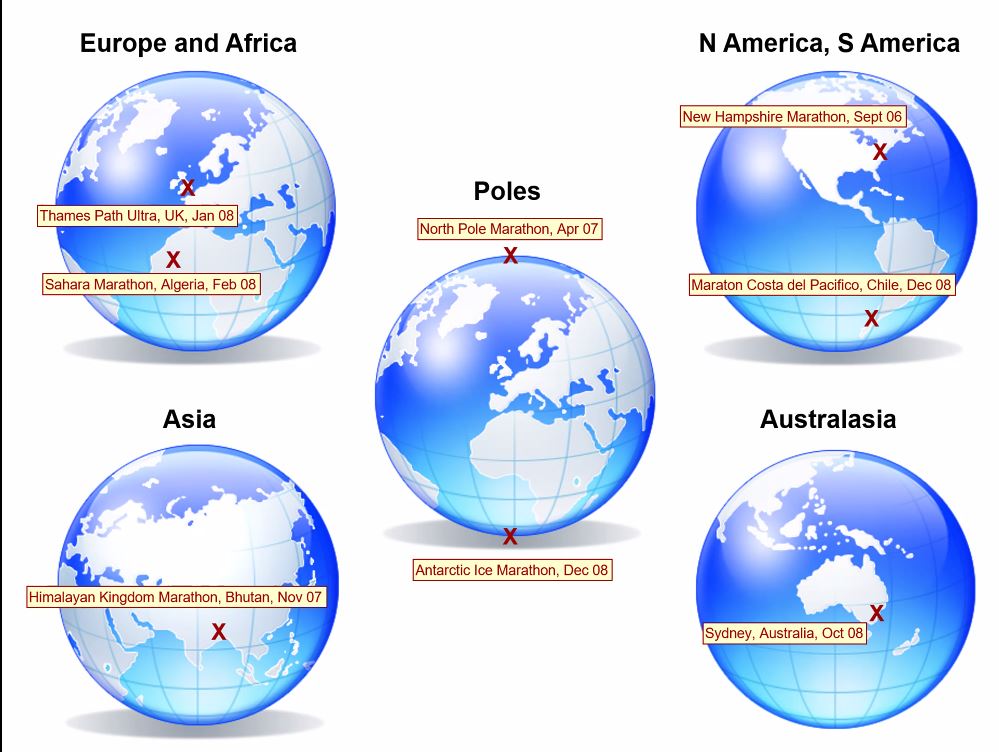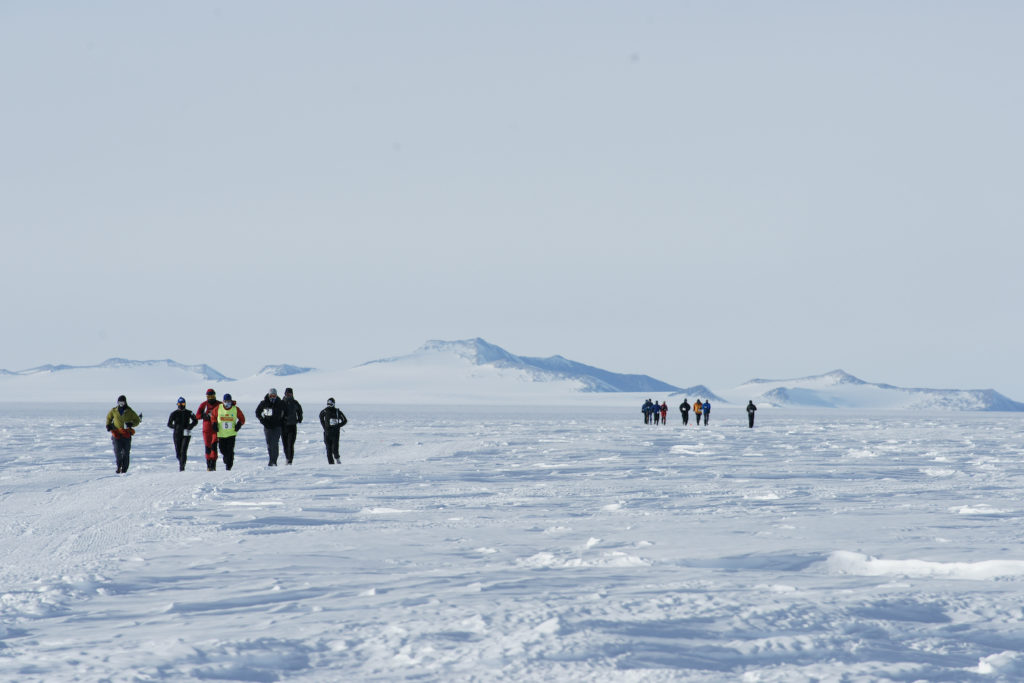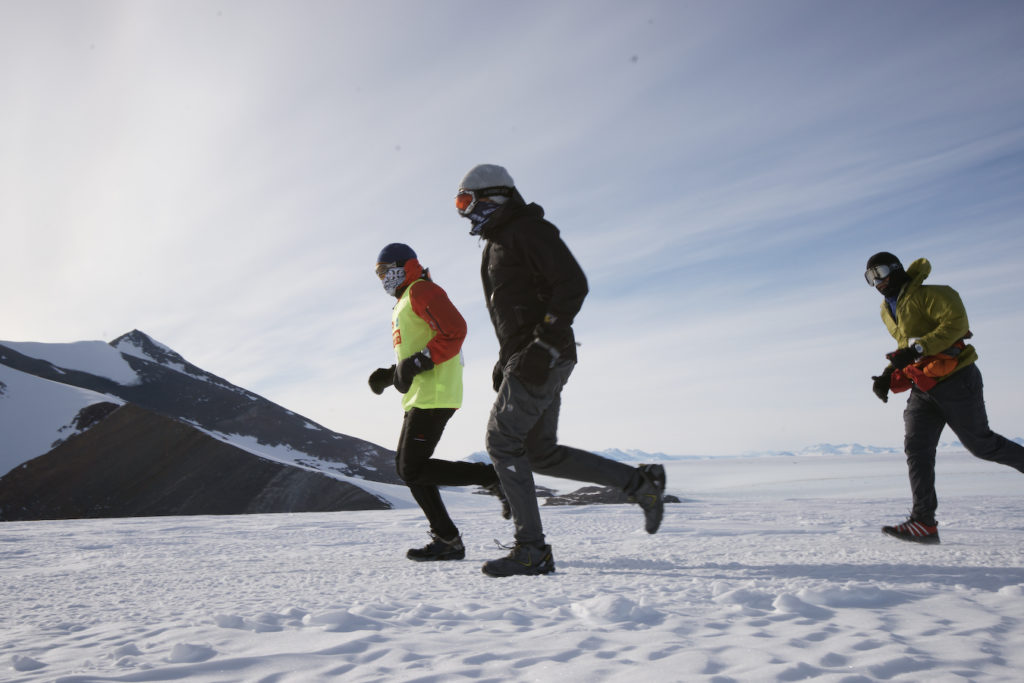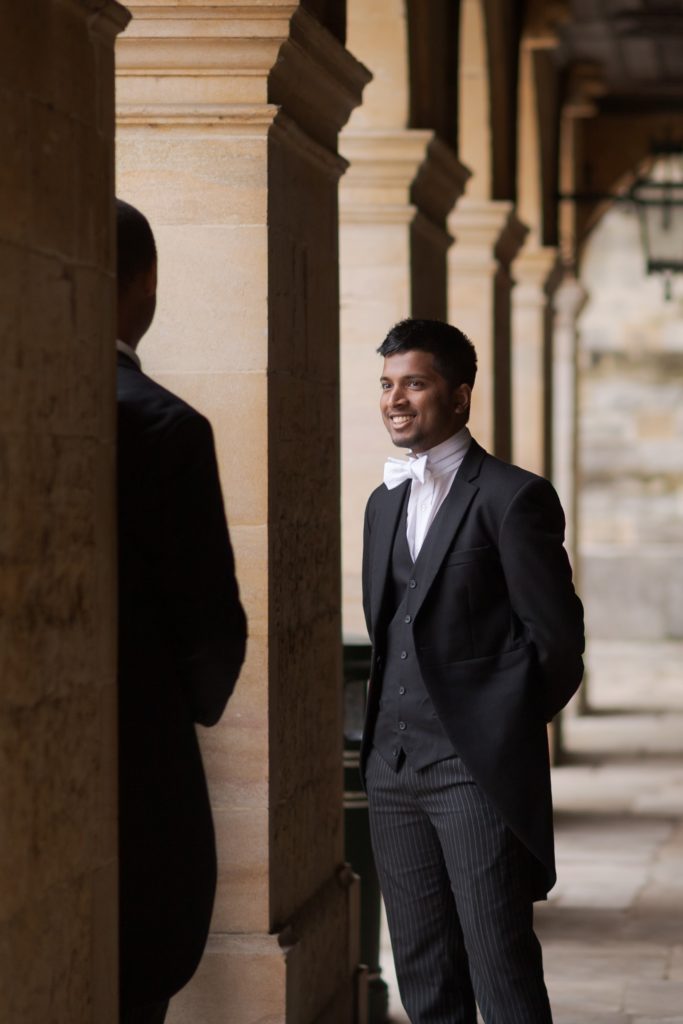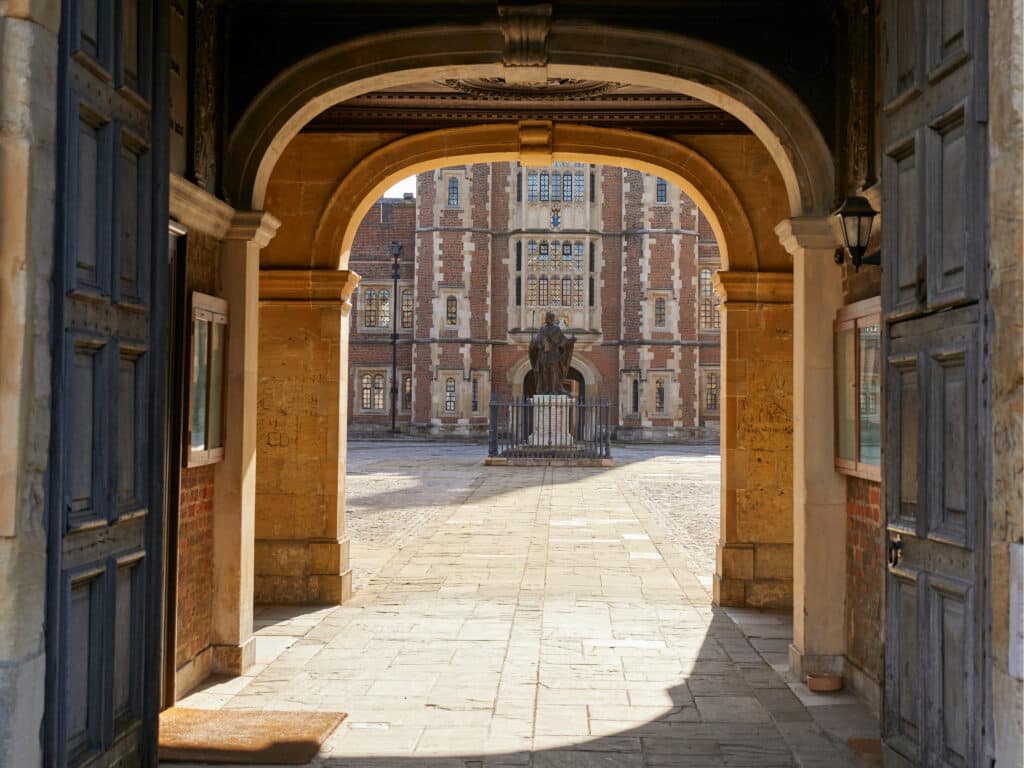Last week the Shackleton Society was honoured to host Miles Cudmore, currently one of only 146 people to have ever run the marathon ‘grand slam’, a marathon on every continent and the North Pole. In fact, when he completed his journey back in 2008, he was only the 30th person to have accomplished this incredible feat, and raised thousands of pounds for Care International and Blood Cancer UK.
Mr Cudmore spoke about his experiences and the challenges of preparing for such different climates, as his running took him from the high mountains of Bhutan to a refugee camp in the Sahara desert, as well as the North Pole and Antarctica.
His eight epic runs included a 50-mile ultra-marathon, which he ran along the Thames Path when it was flooded. Mr Cudmore described having to navigate using the benches along the path, as otherwise he couldn’t see where the path ended and the river began! One of the most surreal experiences was running a marathon on the coast of Chile, where he remember running past ‘loads of seals all barking and making noise’ as if cheering him on his way. The marathon through an Algerian refugee camp was an experience that has stayed with him ever since, describing the people he met as not having much but making him feel ‘incredibly welcomed. To know that any one of us could end up in their situation was very humbling.’
Some of the most challenging aspects of both the training and the actual grand slam came at the extremes of the planet, at the North Pole and Antarctica. At the former, the event organisers have to ‘parachute people in every year to clear a runway before the planes can land’. Neoprene facemasks were essential as even within the tents the temperature never rose above -5 degrees Celsius. There were challenges in the actual running too, as masks can freeze the vapour from your breath and prevent easy breathing. ‘That’s why you prepare for these things and always bring spares’, he said. To prevent people from getting lost, the runners did 10 laps of a marked course, and when they looked at the GPS when they got back, they could see the movement of the ice as they had run.

